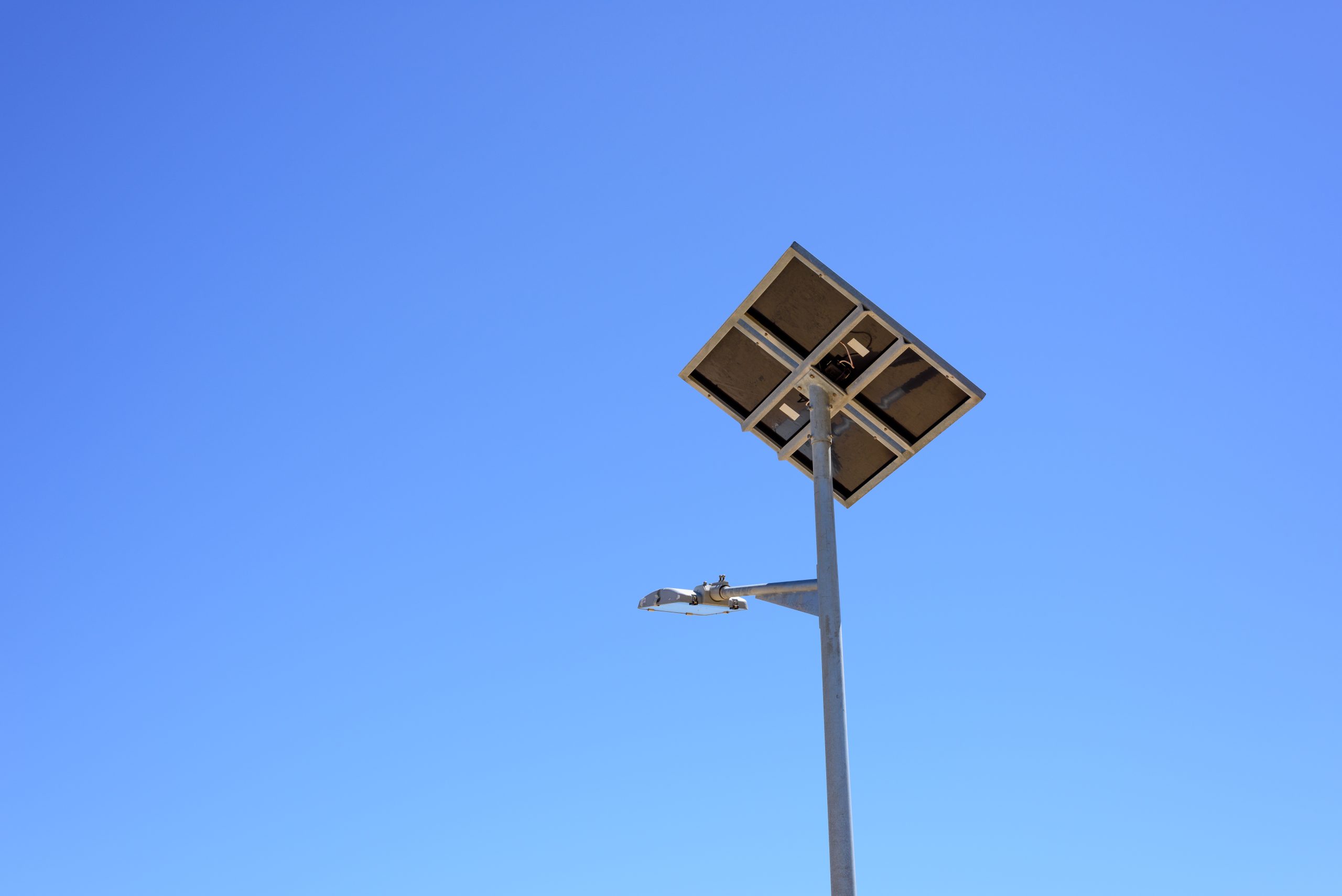In recent years, the world has been grappling with the urgent need to transition from fossil fuels to renewable energy sources. Among the various green alternatives, solar power has emerged as a frontrunner, offering a clean, abundant, and increasingly affordable solution. One application that’s gaining significant traction is solar street lighting—a technology that’s transforming urban landscapes and rural areas alike. This innovative approach to public lighting not only reduces energy costs but also contributes to a more sustainable future.
The Basics of Solar Street Lighting
Solar street lights are self-contained units that harness the sun’s energy to provide illumination during night-time hours. Each unit typically consists of a solar panel, rechargeable battery, LED light, and a smart controller. The solar panel basics transforms sunlight into electricity during the day, subsequently storing it in the battery. As darkness falls, a photo sensor activates the LED light, which runs off the stored energy. This cycle repeats daily, ensuring consistent lighting without the need for grid power.
Energy Efficiency and Cost Savings
One of the most compelling benefits of solar street lighting is its energy efficiency. LED lights, which are standard in these systems, consume up to 80% less energy than traditional high-pressure sodium lamps, which are commonly used in street lighting. This dramatic reduction in energy consumption translates directly into lower electricity bills for municipalities and businesses. In India, where many regions face power shortages, solar street lights offer a reliable alternative that doesn’t strain the grid.
Environmental Impact
The environmental benefits of solar street lighting are substantial. These lights produce zero emissions during operation. In contrast, conventional street lights in India often rely on coal-fired power plants, which are major contributors to air pollution and greenhouse gas emissions. India’s commitment to the Paris Agreement includes reducing its carbon intensity by 45% from 2005 levels by 2030. Solar street lighting can play a crucial role in achieving this goal.
Furthermore, LED lights in solar systems have a longer lifespan (up to 50,000 hours) compared to traditional bulbs. This longevity means fewer replacements, reducing waste and the environmental impact associated with manufacturing and disposing of light bulbs. Additionally, solar street lights don’t contribute to light pollution as much as conventional lights, as they can be designed to direct illumination precisely where it’s needed.
Enhanced Public Safety
Good street lighting is essential for public safety, and solar-powered lights excel in this domain. LED lights provide better color rendering and a uniform distribution of light, making it easier for pedestrians and drivers to see clearly at night. This improved visibility can significantly reduce accidents. A study by the Indian Institute of Technology, Delhi, found that well-lit streets can decrease nighttime traffic accidents by up to 35%.
Solar street lights are also more reliable during power outages, which are not uncommon in many parts of India. When grid-powered lights go dark, solar lights continue to function, ensuring that streets remain safely lit. This resilience is especially valuable in areas prone to natural disasters or remote regions with unstable power supplies.
Rural Electrification and Development
In India, about 31 million people still lack access to electricity, primarily in rural areas. Solar street lighting is emerging as a game-changer for these communities. By providing light in previously dark spaces, these systems enable activities that were once limited to daylight hours. Children can study after sunset; businesses can operate longer; and social gatherings can extend into the evening.
Smart Technology Integration
Today’s solar street lights are far more advanced than their early counterparts. Many now incorporate smart technology, making them a key component of India’s smart city projects. These “intelligent” lights can adjust their brightness based on the presence of people or vehicles, further reducing energy consumption. Some models also come with built-in sensors that collect data on air quality, noise levels, or traffic patterns. This data can help city planners make informed decisions about urban development.
Challenges and Solutions
Despite its many advantages, solar street lighting faces some challenges in India. One concern is battery life, especially in regions with extreme temperatures or heavy pollution that can affect solar panel efficiency. However, technological advancements are addressing these issues. New battery technologies like lithium-ion offer longer lifespans and better performance in varying conditions. Some systems also use supercapacitors alongside batteries, providing quick bursts of power when needed.
The initial investment is another challenge. While solar street lights are cost-effective in the long term, the upfront cost can be a barrier for some municipalities. To overcome this, the Indian government offers subsidies and financial incentives. Banks and microfinance institutions are also providing loans tailored for renewable energy projects. Additionally, innovative business models like Pay-As-You-Go (PAYG) are making solar technology more accessible.
Maintenance is another factor to consider. While solar street lights require less upkeep than traditional ones, they still need periodic cleaning and component replacements. To ensure long-term sustainability, it’s crucial to train local technicians. Organizations like the Skill Council for Green Jobs are leading this effort, preparing India’s workforce for the renewable energy sector.
The Future is Bright
As we look ahead, the future of solar street lighting in India appears incredibly bright. The technology aligns perfectly with the country’s ambitious renewable energy targets—450 GW of renewable capacity by 2030. It also supports India’s Smart Cities Mission, which aims to develop 100 sustainable urban centers.
Moreover, ongoing research promises even greater efficiencies. Scientists at the Indian Institute of Technology Kanpur are developing perovskite solar cells that could boost conversion rates to over 25%, surpassing current silicon-based panels. Such innovations will make solar street lights even more powerful and affordable.
Indo Solar: Illuminating India’s Path to Sustainability
In this journey toward a greener, brighter India, Indo Solar, a subsidiary of Waaree Group, stands at the forefront. Indo Solar, one of the country’s leading solar solutions providers, has been instrumental in bringing the benefits of solar street lighting to communities across the nation. Their state-of-the-art solar panels, designed to withstand India’s diverse climate conditions, ensure optimal performance from the sun-drenched deserts of Rajasthan to the humid coastlines of Kerala.
Indo Solar’s commitment goes beyond just providing hardware. They offer comprehensive solutions, including site assessment, customized design, installation, and after-sales service. Their smart solar street lights, equipped with motion sensors and remote monitoring, are setting new standards in energy efficiency. Ensuring that the technology is not only installed but also embraced by the community.
With a vision aligned with India’s green goals, Indo Solar is not just lighting up streets—they’re illuminating the nation’s path to a sustainable, energy-independent future. As more towns and cities switch to solar, Indo Solar’s innovative solutions are ensuring that every step on this journey is bright, safe, and environmentally friendly.




